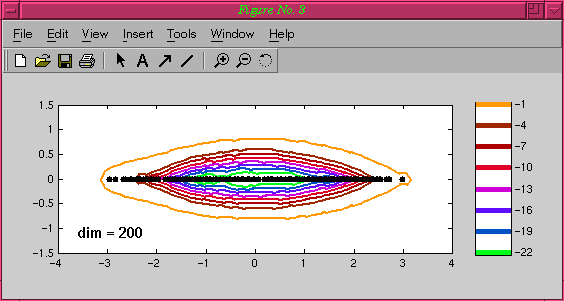

Since the Nobel prize-winning work of P. Anderson in 1958, random tridiagonal matrices have been famous as models of disordered condensed matter quantum systems; their eigenvectors are exponentially localized, and this is connected with lack of transparency to light and conductivity to electrons of certain 1D physical systems [1]. The Hatano-Nelson model was proposed in 1996 by two physicists as a contribution to the "nonhermitian quantum mechanics" of certain systems in physics and biology [2]. This example matrix is tridiagonal and exponentially nonnormal; pseudospectra such problems are analyzed in [3]. Hatano and Nelson actually proposed the periodic analogue with nonzero corner elements, which is much closer to normal.
[1]: P. Anderson, "Absence of diffusion in certain random lattices", Phys. Rev., 109 (1958), 1492-1505.
[2]: N. Hatano and D. R. Nelson, "Localization transitions in non- Hermitian quantum mechanics", Phys. Rev. Lett. 77 (1996), 570-573.
[3]: L. N. Trefethen, M. Contedini, and M. Embree, "Spectra, pseudospectra, and localization for random bidiagonal matrices" Comm. Pure Appl. Math. 54 (2001), 595-623.
EigTool EigTool Demos Menu.